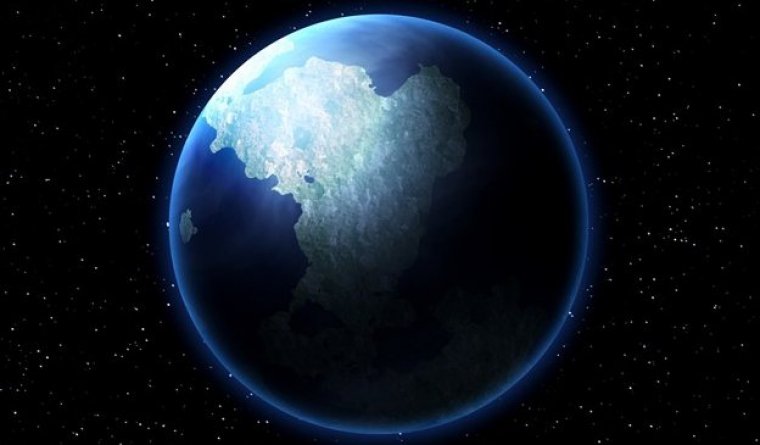| News / Science News |
New study helps pinpoint when Earth's plate subduction began
A study by scientists at the Scripps Institution of Oceanography and the University of Chicago sheds light on a major question in Earth sciences: When did tectonic plate subduction begin?

Rocks record Earth's transition from alien landscape to continents, oceans, life. Photo: CC0 Public Domain
Plate subduction occurs when oceanic crust and continental crust collide, pushing oceanic crust downward into Earth's mantle. According to findings, this process could have started 3.75 billion years ago, reshaping Earth's surface and setting the stage for a planet hospitable to life.
For geochemists such as lead author Sarah Aarons of Scripps, the clues to Earth's earliest habitability lie in the elements ancient rocks are composed of -- specifically titanium.
Aarons analyzed samples of Earth's oldest-known rocks from the Acasta Gneiss Complex in the Canadian tundra, an outcrop of gneisses 4.02 billion years old. The rocks are dated from the Hadean eon, which started at the beginning of Earth's formation and was defined by hellish conditions on a planet that would look alien to our modern eyes.
Studying the history and onset of ancient subduction zones is notoriously difficult. Rocks are constantly destroyed as crust is driven inward into the mantle, leaving behind few samples that date back to Earth's earliest history.
Scientists have long debated when plate tectonics and subduction began, with estimates ranging from 0.85 to 4.2 billion years ago -- more than two-thirds of the planet's history.
In four-billion-year-old rock samples, Aarons saw similarities to modern rocks that are formed in plume settings, such as Hawaii and Iceland, where a landmass is drifting over a hot spot. However, in rocks aged at 3.75 billion years, she noticed a shift to rocks that are formed similarly to those in modern subduction zones, suggesting that subduction zones began at about that time in Earth's history.
The technique used in this study could be applied to other ancient rock formations around the world to gain more information about the composition and evolution of Earth's lands through time, the scientists say.
YOU MAY ALSO LIKE





